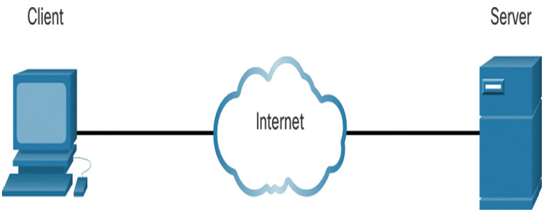Objectives
Upon completion of this chapter, you will be able to answer the following questions:
- Can you describe client and server interaction?
- What are common network applications?
- How does DNS operate?
- How do HTTP and HTML operate?
- How does FTP operate?
- How does Telnet and SSH operate?
- How do email protocols operate?
Key Terms
This chapter uses the following key terms. You can find the definitions in the Glossary.
Domain Name System (DNS)
Dynamic Host Configuration Protocol (DHCP)
File Transfer Protocol (FTP)
HyperText Markup Language (HTML)
Hypertext Transfer Protocol (HTTP)
Internet Message Access Protocol (IMAP)
Post Office Protocol (POP)
Secure Shell (SSH)
Simple Mail Transfer Protocol (SMTP)
Kishori needs to get access to a patient file. She has done this many times, but it is only now that she is wondering how this process actually happens in a network. Where does this electronic document come from? How is she able to access the hospital’s intranet? How is she able to access the internet at all? All of this is possible because of application layer services.
Kishori has more to learn before she applies for that position that Rina mentioned. There are many services that work at the application layer including some you’re familiar with such as FTP, DHCP, and DNS. Just about any time you want to retrieve something that is not already located on your computer, you will be the client requesting that the appropriate server send you that item. And of course, by now you know that there will be protocols involved. Read on!
The Client Server Relationship (16.1)
Most network communications involves a client server relationship. This includes many of the network services we use today include browsing the web, reading our email, watching videos, and much more. Many internal and service provider infrastructures are based on this architecture.
Client and Server Interaction (16.1.1)
Every day, we use the services available over networks and the internet to communicate with others and to perform routine tasks. We rarely think of the servers, clients, and networking devices that are necessary in order for us to receive an email, update our status on social media, or shop for the best bargains in an online store. Most of the commonly used internet applications rely on complicated interactions between various servers and clients. In Figure 16-1, a client and server are connected over the internet.

Figure 16-1 An Example of a Client and Server
The term server refers to a host running a software application that provides information or services to other hosts that are connected to the network. A well-known example of an application is a web server. There are millions of servers connected to the internet, providing services such as web sites, email, financial transactions, music downloads, etc. A crucial factor to enable these complex interactions to function is that they all use agreed upon standards and protocols.
An example of client software is a web browser, like Chrome or Firefox. A single computer can also run multiple types of client software. For example, a user can check email and view a web page while instant messaging and listening to an audio stream. Table 16-1 lists three common types of server software.
Table 16-1 Command Types of Server Software

